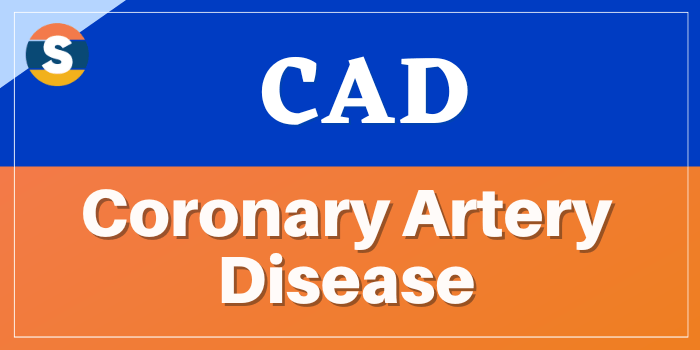
The Full form of CAD is Coronary Artery Disease. CAD is the blockage or impedance of one or more arteries that supply blood to the heart, usually due to hardening of the arteries (atherosclerosis). It is also called Coronary Heart Disease (CHD), CAD is the most common form of heart disease and affects approximately 16.5 million of US population over the age of 20. It is estimated that in every 40 seconds, someone in the United States has a heart attack. The most common cause of CAD is vascular injury with cholesterol plaque buildup in the arteries, known as atherosclerosis. Reduced blood flow occurs when one or more of these arteries become partially or completely blocked. There are four primary coronary arteries that are located on the surface of the heart; right main coronary artery, left main coronary artery, left circumflex artery and left anterior descending artery. When heart doesn’t get enough arterial blood, a person may experience a variety of symptoms. Chest discomfort (Angina) is the most common symptom of CAD. Some people describe this discomfort as: chest pain, heaviness, tightness, burning and squeezing. Treatment for CAD includes balloon angioplasty, bypass surgery, and the use of stents.